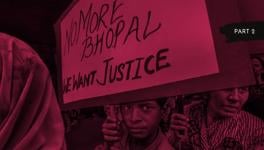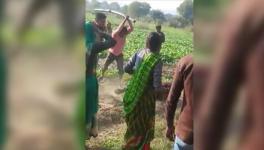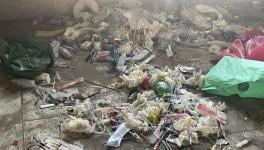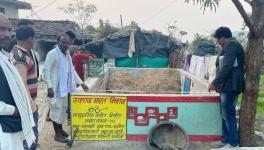Lives of Peasants in India #10
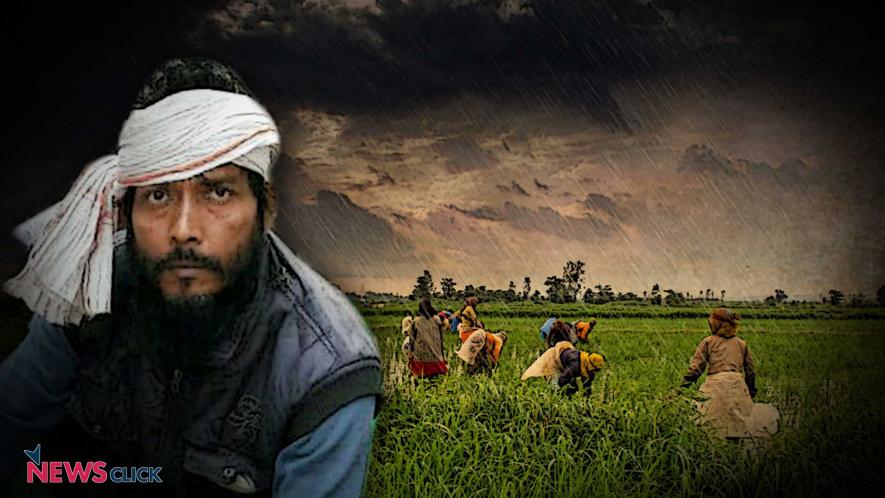
Newsclick Image by Sumit
The year 2017 saw an outpouring of farmers’ protests sweeping the country. To understand why they happened, NewsClick presents a series of profiles of farmers from different parts of India, based on interviews done by students from Delhi, guided by the Society for Social & Economic Research (SSER). See Introduction to series.
Jagdish Patel is a middle peasant with 11 acres of very fertile, irrigated land in the upper reaches of Narmada valley. However, even for his household, the return over investment, particularly when value of their own labour and resources is accounted for, was very small.
Jagdish Patel is from Pachama village in the fertile Narsinghpur district of Madhya Pradesh, situated in the upper part of the Narmada Valley. Sugarcane is the major commercial crop of the region. Narsinghpur is the largest sugarcane producing district of Madhya Pradesh and accounts for about 65 per cent of state’s production. There are many sugar mills in the district. Kareli, a town in Narsinghpur, has one of the largest gur mandis in India. But the farmers of the district have been protesting for a long time for better produce prices. In November 2017, sugarcane farmers staged a protest and burnt sugarcane to show their anger.
Jagdish Patel (49 years) owns 11 acres of tubewell irrigated land which is very intensively used. Last year, he had sugarcane on half of his land. On the remaining land, he cultivated paddy in the kharif season (June to November), followed by wheat in the rabi season (November to March), and a third summer (March to May) crop of mung. Over the last few years, new varieties of mung have become available that mature in a little over two months. Use of tractors for land preparation and combine harvesters for harvesting also helps in saving time. While tractors are available for hiring locally, harvesting is done by combine harvesters that come to Narsinghpur from Punjab during the harvesting season. Availability of short-duration crops and mechanisation have made it possible for farmers like Jagdish Patel to grow three crops in a year. But growing sugarcane on half of the land, and paddy, wheat and mung on the other half means that Jagdish Patel and his family have to work hard in the fields round the year.
Sugarcane is an extremely cost and labour intensive crop. This is particularly so in the year in which new setts (stalks or roots) are planted. With high cost of seed material and land preparation, farmers have to not only invest a lot of money but also have to labour very hard. Sugarcane is also a difficult crop to maintain, as it needs frequent irrigation, weeding and nutrient application. Weeding and harvesting sugarcane is tough work as sharp sugarcane leaves often wound workers.
Sugarcane is crop for which most farmers practice ratooning. That is, once a freshly planted crop is harvested, the stubble is allowed to grow into a new, ratoon crop. Although freshly planted sugarcane gives higher yield, ratoon crops can give higher return because the farmer saves the cost of land preparation, setts and planting. In view of this, most sugarcane farmers take at least one or two ratoon crops of sugarcane before they plant new setts again.
Last year, all the sugarcane on Jagdish Patel’s land was freshly planted. From this, he got 1000 quintals of cane which was sold for Rs.240 per quintal to a sugar mill. He used DAP, urea, super phosphate, potash, zinc and sulphur for the sugarcane crop, all of which together cost him Rs. 74,000. In addition, he spent Rs. 55,000 on plant protection chemicals. In comparison with a total paid out expenditure of Rs 2.26 lakhs on sugarcane, Jagdish Patel got a net return of only about Rs. 14,000.
The household got better returns from the other half of their land on which they planted paddy, wheat and mung. In all, this land produced 100 quintals of paddy, 60 quintals of wheat and 15 quintals of mung. Annual paid out expenditure on this part of the land, adding expenditure on all the three crops, was about Rs. 1.5 lakhs. Over this paid out expenditure, the household got an income of Rs. 1.8 lakhs.
It is noteworthy that, despite having 11 acres of very intensively cropped land, the income from all the crops amounted to only about Rs. 4,000 per capita per month. If we account for the value of large amount of labour done by four members of the family and value other households resources that were deployed on the land, the total income from 11 acres of their land was only about Rs. 48,000. This was barely 9 per cent of the total investment in production.
Suvidya Patel is a Research Scholar at Jawaharlal Nehru University.
Part 1 of the series can be read here.
Part 2 of the series can be read here.
Part 3 of the series can be read here
Part 4 of the series can be read here
Part 5 of the series can be read here
Part 6 of the series can be read here
Part 7 of the series can be read here
Part 8 of the series can be read here
Part 9 of the series can be read here
Disclaimer: The views expressed here are the author's personal views, and do not necessarily represent the views of Newsclick.
Get the latest reports & analysis with people's perspective on Protests, movements & deep analytical videos, discussions of the current affairs in your Telegram app. Subscribe to NewsClick's Telegram channel & get Real-Time updates on stories, as they get published on our website.













